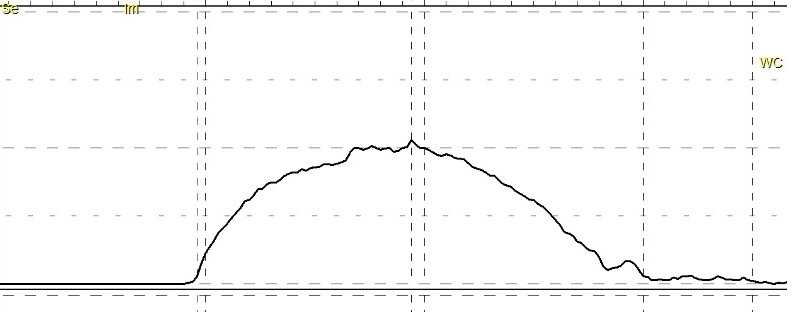What is uroflowmetry (UFM)?
Uroflowmetry is a simple and non-invasive test for studying the urine flow. As the name suggests, it is a measurement of the volume of urine passed, the manner in which the urine is passed and the time taken. It also gives an indication of the likely symptoms that you may have. It is a computerized test.
How is this test performed?
You will need to pass urine into a special commode that is connected to a measuring instrument and computer. The important part of this is to pass urine like you normally would at home. You can pass the urine either standing or sitting, as is your usual practice. Unfortunately, you cannot squat to pass urine.
Basically you need to replicate normal urination.
How do I prepare for the test?
In essence, you should have a bladder full of urine but not overfull. Generally most people, need to take 2 glasses of water (around 500 ml, 2 hours prior) and do not pass urine until you are ready to do the test. You must empty the bladder before drinking water.
After you drink any fluid, it takes 2 hours to reach the urinary bladder. There is no point in coming to the Uroflow Lab and then drinking water. You will then have to wait for 2 hours. You cannot speed up the process of urine filling in the bladder.
If you have not passed stools on the day of your test, it is better to reschedule the test for another day when you have cleared your bowels well. If you are unable to do so without a laxative, inform the doctor and take a laxative/enema.
As mentioned earlier, there is no need to take more fluids if you already had fluids. Patience is the key to doing a normal test.
What is the required optimal volume for the test?
Required volume of urine for the test:
- Adults : 200 - 400ml
- Children < 12 years : 150 - 200ml
If the volumes are either less or more than the volumes indicated, you will be required to repeat the test to get normal a representation.
If you have urinary urgency, urine leak, urine frequency, please inform the nurse so that your test can be tailored accordingly. It is important to bring a copy of your abdominal ultrasound study, also for appropriate decision to be made at that time.
When will I get my report?
The report will be available immediately after the test, and you can discuss it with your doctor.
Instructions for the test
- You must not drink excessive fluids before the test, as it may cause complications
- You should have a normal sensation to pass urine
- You must not touch the beaker or shake your body while urinating
- The test will be repeated, if you are not able to urinate the required volume
- If you are a kidney failure/dialysis patient, please intimate/contact us prior to undergoing this test. The test can be done by passing a catheter to fill the bladder with saline solution. And after removing the catheter you can pass urine for the test to be completed.
- Inform us, if you have urgency, urge incontinence
- Please bring a copy of your abdominal ultrasound scan report (if done elsewhere).
- You may void normally, either sitting or standing in the commode.
- It should replicate the normal voiding pattern.
- For any reason if the waiting is long, a small dose of Inj. Lasix can be administered to get the bladder filled well early, and complete the test.
Note: In case of any discomfort to void in presence of staff, inform the staff before the test.
After this test, what next?
You will be asked by the staff, if this is the normal pattern of your urine flow. If not, you can repeat the test again.
The report will be sent online or a print will be sent to your file which your doctor will see and advise.
Reference
Campbell-Walsh 12th edition,
Reviewed: 17.02.2023

